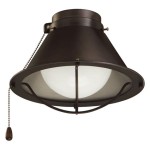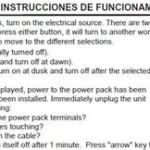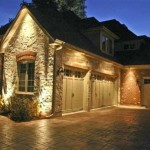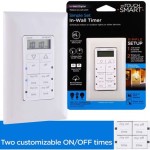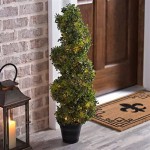Outdoor Fluorescent Light Ballast Replacement
Outdoor fluorescent light fixtures are a common sight in residential and commercial settings. They provide efficient and long-lasting illumination for driveways, parking lots, gardens, and more. However, like any electrical component, the ballast within these fixtures can eventually fail. When this happens, the fluorescent bulb will not light, or it may flicker or hum. Replacing the ballast is a relatively simple task that can be performed by a homeowner with basic electrical knowledge and the right tools.
This article will serve as a guide to replacing an outdoor fluorescent light ballast. It will cover the necessary tools, safety precautions, and step-by-step instructions. By understanding the process, you can ensure the continued functionality of your outdoor lighting system and avoid costly repairs.
Understanding Fluorescent Ballast Function
The ballast is an essential component of a fluorescent lighting system. Its primary function is to provide the necessary voltage and current to start and operate the fluorescent bulb. Fluorescent lamps require a high-voltage surge to ignite the gas inside the bulb, and the ballast provides this surge. Once the bulb is lit, the ballast regulates the current to maintain consistent brightness.
Ballast types are generally categorized as magnetic and electronic. Magnetic ballasts are older and less energy efficient than electronic ballasts. However, they tend to be more robust. Electronic ballasts are more common in modern lighting fixtures and offer improved energy efficiency, reduced noise, and longer lifespan.
Tools and Safety Precautions
Before attempting any electrical work, it is crucial to prioritize safety. Always disconnect the power to the fixture from the circuit breaker before working on it. Use appropriate personal protective equipment (PPE), including safety glasses, insulated gloves, and non-conductive footwear.
To replace an outdoor fluorescent light ballast, you will need the following tools:
- Screwdriver
- Wire strippers
- Voltage tester
- New ballast (matching the existing fixture specifications)
- Optional: Multimeter (to test the ballast before installation)
Steps for Replacing an Outdoor Fluorescent Light Ballast
Follow these steps to replace an outdoor fluorescent light ballast:
- Turn Off Power: Locate the circuit breaker controlling the outdoor lighting fixture and turn it off. Use a voltage tester to verify that power is completely disconnected.
- Remove Fixture Cover: Remove the screws securing the fixture cover and carefully detach it. You may need to remove any screws holding the fixture to the mounting surface.
- Disconnect Wires: Carefully disconnect the wires connected to the ballast. Use a wire stripper to remove the insulation from the ends of the wires if necessary. Be sure to note the wire colors and positions so you can reconnect them correctly.
- Remove Old Ballast: Remove the screws holding the old ballast in place. Carefully detach it from the fixture.
- Install New Ballast: Position the new ballast in the same location as the old one. Secure it using the provided mounting screws or clips. Ensure that the ballast is properly aligned and seated.
- Reconnect Wires: Carefully connect the wires to the new ballast. Match the wire colors and positions to ensure a secure connection. Use wire nuts or other appropriate connectors to secure the connections.
- Test for Power: Turn the power back on at the circuit breaker. Use the voltage tester to verify that power is restored to the fixture. Check the bulb to see if it lights up properly.
- Reassemble Fixture: If everything works correctly, reassemble the fixture by attaching the cover and securing it with screws.
Remember to dispose of the old ballast properly. Ballasts contain hazardous materials and should not be thrown in the trash. Check with your local recycling center for proper disposal instructions.
Troubleshooting Common Issues
If the bulb does not light after replacing the ballast, there are several potential issues to troubleshoot:
- Incorrect Wiring: Ensure that the wires are correctly connected to the ballast. Check the wiring diagram for the fixture if available.
- Faulty Bulb: Replace the bulb with a new one to rule out a faulty bulb as the cause of the issue.
- Damaged Wires: Inspect the wires for any damage or loose connections. Repair or replace damaged wires if necessary.
- Faulty Circuit Breaker: Check the circuit breaker to ensure it is properly tripped and not faulty.
Finally, you may want to consider upgrading to LED lighting for even greater energy efficiency and longer lifespan. LED technology has advanced significantly, providing a viable alternative to fluorescent lighting.

Fulham 128 Watt 120 Volt Fluorescent Replacement Electronic Ballast Wh5 L The Home Depot

Philips Advance Centium 40w F40t12 1 Or 2 Lamp 4 Ft T12 120 Volt Rapid Start High Frequency Electronic Fluorescent Replacement Ballast 520460 The Home Depot

Amax Lighting 120 Volt 4 13 In Electronic Ballast 1 Lamp Fc8t9 T5 Hd22 120b The Home Depot

Philips Advance Centium 110 Watt 1 Or 2 Lamp T12 8 Ft Ho Rapid Start High Frequency Electronic Fluorescent Replacement Ballast 520486 The Home Depot

Amax Lighting 120 Volt 6 63 In Electronic Ballast 2 Pl 13 Watt Lamps Hd13x2 120a The Home Depot

How To Replace A Fluorescent Light Ballast Mr Electric

Rab Lighting T8 52 48g Watt 4 Lamp Ballast Replacement Ft Linear Tubes Dimmable

Universal Electronic Sign Ballast 120v To 277v For 1 4 T12 Ho Or T8 Esb432 14 Bulbs Com

Philips Advance Optanium 32 Watt F32t12 3 Or 4 Lamp T8 Ft 120 277 Volt Instant Start Electronic Fluorescent Replacement Ballast 520387 The Home Depot

Amax Lighting 120 Volt 6 63 In Electronic Ballast 1 Lamp Uvf861 Hd8x2 120a The Home Depot
